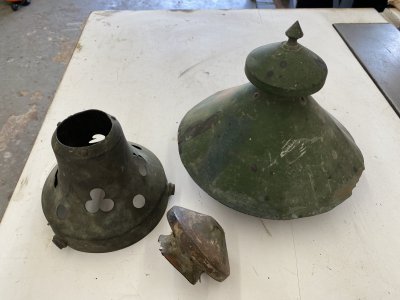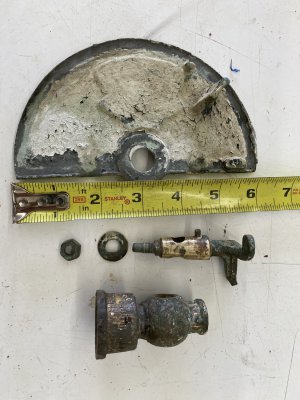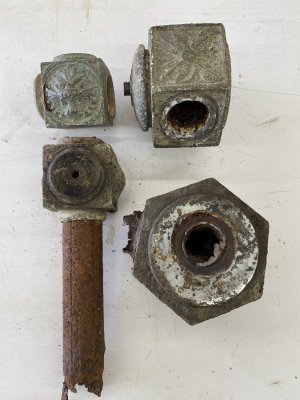I have had these lamps squirreled away for 25 years or so, my Great Uncle saved them from a teardown sometime in the 60's. I think it's time to either fish or cut bait!
There are 3 partial fixtures so, I have most of what I need to make 2 front porch lights. The amazing thing is that I have FOUR of the hand blown glass globes! I'd like to identify the alloy so I can make some repair parts that will take a patina at the same rate as the original parts. There's quite a bit of damage as well as broken solder joints. I plan to get down to cleanish brass and use some undetermined commercial aging. This stuff is as soft and malleable as copper but, scraping through the corrosion you can tell it's definitely brass. How do I find out what alloy to use or, could I just go with copper and tie them together with the aging?
Anyway, some pictures that don't really provide a sense of scale. Assembled these will be 36" tall!
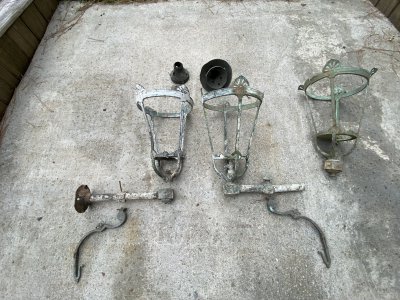
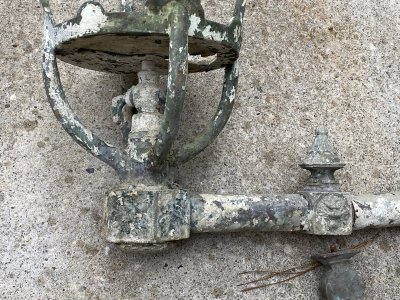
There are 3 partial fixtures so, I have most of what I need to make 2 front porch lights. The amazing thing is that I have FOUR of the hand blown glass globes! I'd like to identify the alloy so I can make some repair parts that will take a patina at the same rate as the original parts. There's quite a bit of damage as well as broken solder joints. I plan to get down to cleanish brass and use some undetermined commercial aging. This stuff is as soft and malleable as copper but, scraping through the corrosion you can tell it's definitely brass. How do I find out what alloy to use or, could I just go with copper and tie them together with the aging?
Anyway, some pictures that don't really provide a sense of scale. Assembled these will be 36" tall!




